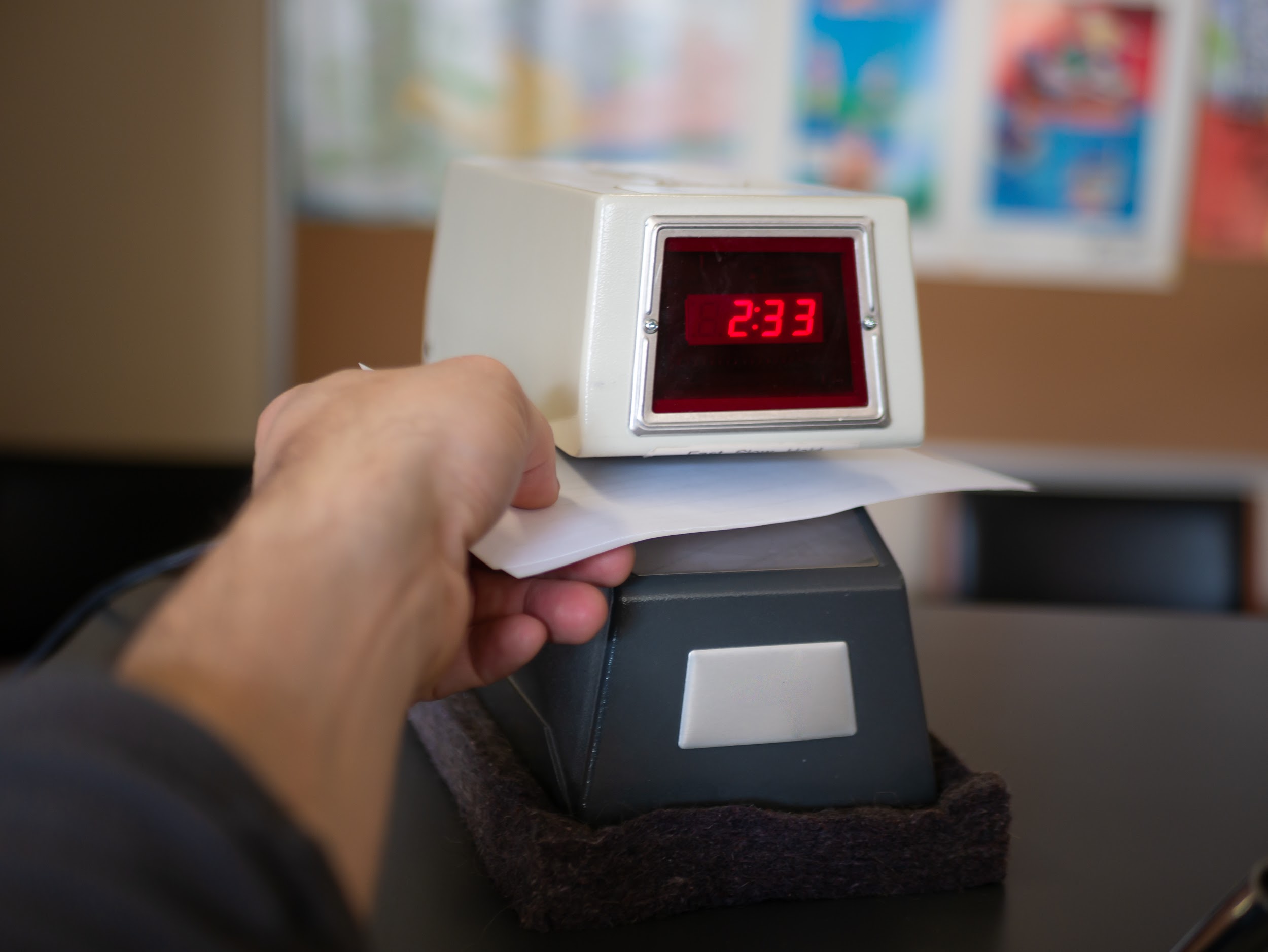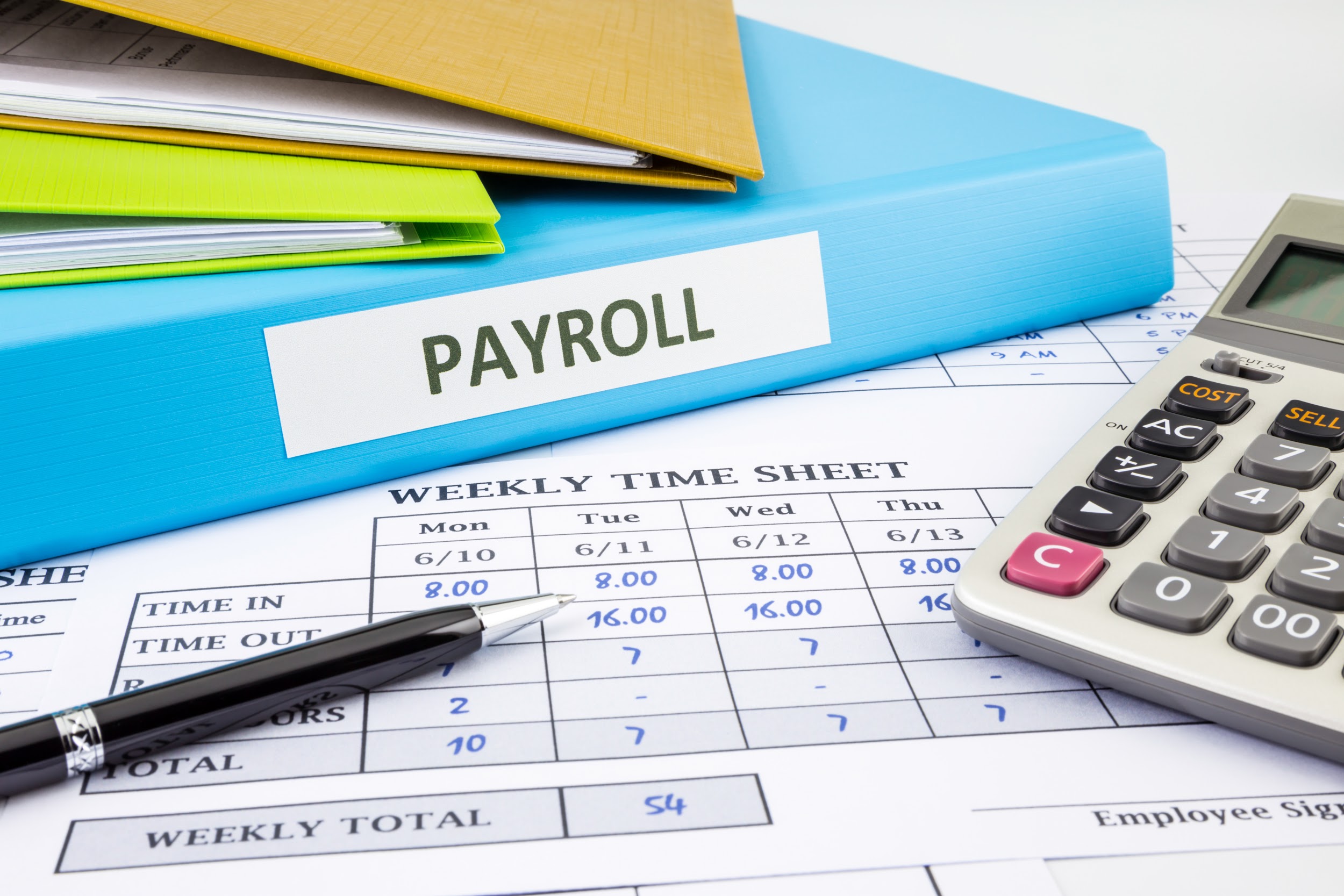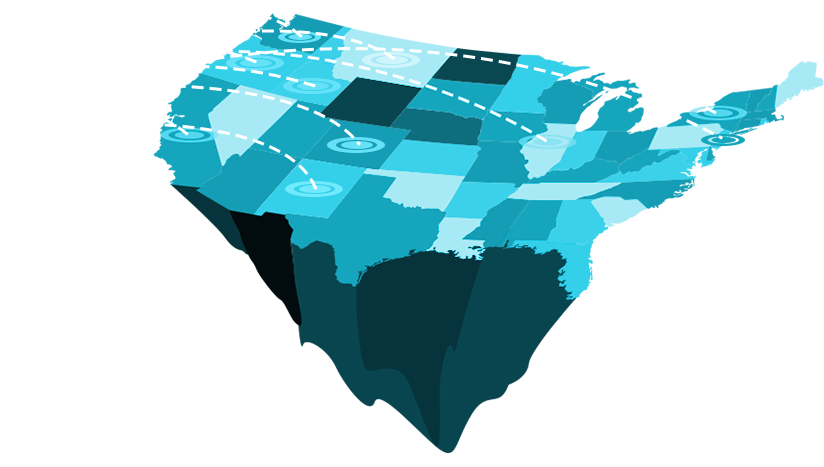Blog > The History of Employee Time Tracking

These days, we rarely have to worry about attendance tracking. The majority of workplaces have time clocks (or “punch clocks”) to help us record when employees start and when they finish.
That’s because, over the last century and more, employers have been trying to find better ways to track the hours worked by employees. Way back when attendance was meticulously recorded and calculated on paper by diligent payroll administrators.
So, how did we get from paper and ink to recording worked hours and payroll at the click of a button?
Manual Time Clock (Paper Cards/Stamps)
The manual time clock was first developed in 1888 by Willard le Grand Bundy, although there is evidence to suggest that similar clocks had existed beforehand.
Companies now had a way to ensure that employees were getting paid for exactly the hours they worked. These basic attendance trackers used a clock to stamp the date and time that an employee began and finished work on a piece of paper. In other words when they “clocked in” and “clocked out.”
The time cards produced from these regular time stampings were then provided to a manager and passed to payroll to calculate overall hours worked for a given time period.
Manual time clocks are still used today (albeit in a slightly more sophisticated, compact version), but they’re quickly becoming obsolete in the face of increasingly cheaper and more advanced attendance tracking software.
Automated Attendance Software
Automated online attendance trackers take this one step further. Instead of merely stamping the time and date, they also add up hours and automate a lot of the calculations for HR.
There are huge variations in how advanced the software (and the physical clock in/out machines they are linked to) are in different workplaces.
They include employee attendance trackers that can:
- Link directly to payroll software.
- Prevent fraudulent timestamps.
- Cut down processing time and admin for HR/Payroll.
- Use biometric information (fingerprint, finger veins, facial recognition cameras, etc.) to record attendance.
Mobile Time Tracking

Everything is on mobile these days. It seems as though our entire lives are right there in our hands, on our smartphones. So, it’s not surprising that an attendance tracker is no different.
Many attendance tracker apps have been developed to help HR record employee hours virtually. It makes sense when you think of the rise of remote workers, but it also helps when tracking field workers such as :
- Construction employees
- Consultants
- Field salespeople
Mobile time tracking is often done through call-in systems or with mobile apps. For HR, it means they can more accurately validate an employee’s work hours, especially when you take the potential for GPS location tracking into account (which many attendance tracker apps do).
Keeping accurate and easily accessible time and attendance records is a vital component of HR and Payroll departments, but it can also be costly and time-consuming when done in-house. Let us shoulder the burden for you with our Time & Attendance services. Contact us today at (844) 200-1870.

